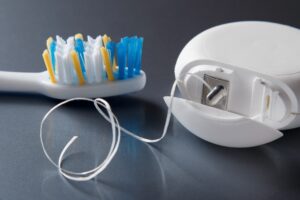As a parent, you’re all too familiar with stomach bugs, chickenpox, and the sniffles. But what about hand, foot, and mouth disease (HFMD)? That one often leaves parents scratching their heads.
So, what exactly is this common, yet puzzling, illness that affects young children? And more importantly, how can you protect your little ones?
Understanding Hand, Foot, and Mouth Disease
What Causes Hand, Foot, and Mouth Disease?
Hand, Foot, and Mouth Disease (HFMD) is a viral infection primarily caused by the coxsackie virus. Known for its notorious spread in daycare and preschool environments, this illness thrives where little ones play and interact closely.
It’s not usually serious, but it can certainly cause discomfort and stress for both kids and parents. The virus can spread through sneezes, coughs, and even the air we breathe, especially in close quarters.
Although it might sound alarming, rest assured that HFMD is generally mild and self-limiting. In most cases, it clears up on its own within a week to ten days.
Symptoms of Hand, Foot, and Mouth Disease
So, how do you know if your little one is suffering from HFMD? Here are a few tell-tale signs:
Symptoms may start like a regular cold.
Watch for:
- Fever
- Sore throat
Common signs of HFMD:
- Painful mouth sores
- Rash on hands and feet
- The rash can be uncomfortable and may turn into blisters.
- It resembles an unpleasant twist on chickenpox
Is Hand, Foot, and Mouth Disease Contagious?
Yes, this disease loves a good social gathering. It’s highly contagious, especially in close-knit environments like schools and playgrounds.
The Hand, Foot, and Mouth Disease Contagious Period
Timing is everything! HFMD is most contagious during the first week of illness, and children can remain contagious until the blisters have disappeared. It’s crucial to take a social timeout and keep your child isolated during this period to help slow down its spread.
Treating Hand, Foot, and Mouth Disease in Kids
While there’s no specific medicine to make HFMD vanish, you can ease the symptoms and provide some comfort at home.
Home Remedies and Care Tips
Focus on keeping your child hydrated. Offer cold foods like ice pops to soothe mouth sores. Avoid spicy or acidic foods – think burritos and orange juice – which may sting. Over-the-counter pain relief can help with the fever and sores.
When to See a Doctor
Most kids recover within seven to ten days without any complications. However, if your child becomes unusually irritable, lethargic, or shows signs of dehydration like a dry mouth or decreased urination, it might be time to visit the doctor. Severe cases sometimes need professional attention.
Preventing Hand, Foot, and Mouth Disease in Toddlers
A little prevention goes a long way, especially when it comes to HFMD. Here’s how you can stay ahead of it.
Hygiene Practices to Reduce Risk
The best defense? Good hygiene. Teach your young one the art of handwashing. A soapy lather and a good rinse can work wonders. Don’t forget to disinfect frequently touched surfaces like doorknobs and toys.
Avoiding Close Contact
Keeping your kids from close contact with infected playmates requires a balancing act. Discuss the importance of personal space with your child. Until those sores have cleared, avoiding crowded areas is crucial. And remember, sharing isn’t always caring – teach them not to share cups or utensils.
Conclusion
Dealing with hand, foot, and mouth disease is like being thrown into an unexpected parenting test. But, by understanding the ins and outs of HFMD, you arm yourself with the power to spot its signs early and prevent its spread. Keep the hand sanitizer handy and the tissues stocked.
Your role as a parent involves many hats – doctor, cleaner, and now, virus detective. With these tips, you’re prepared to keep HFMD at bay and nurture your child’s health, one clean hand at a time. Stay aware, act fast, and above all, don’t panic. Your child’s well-being is always worth the effort.







